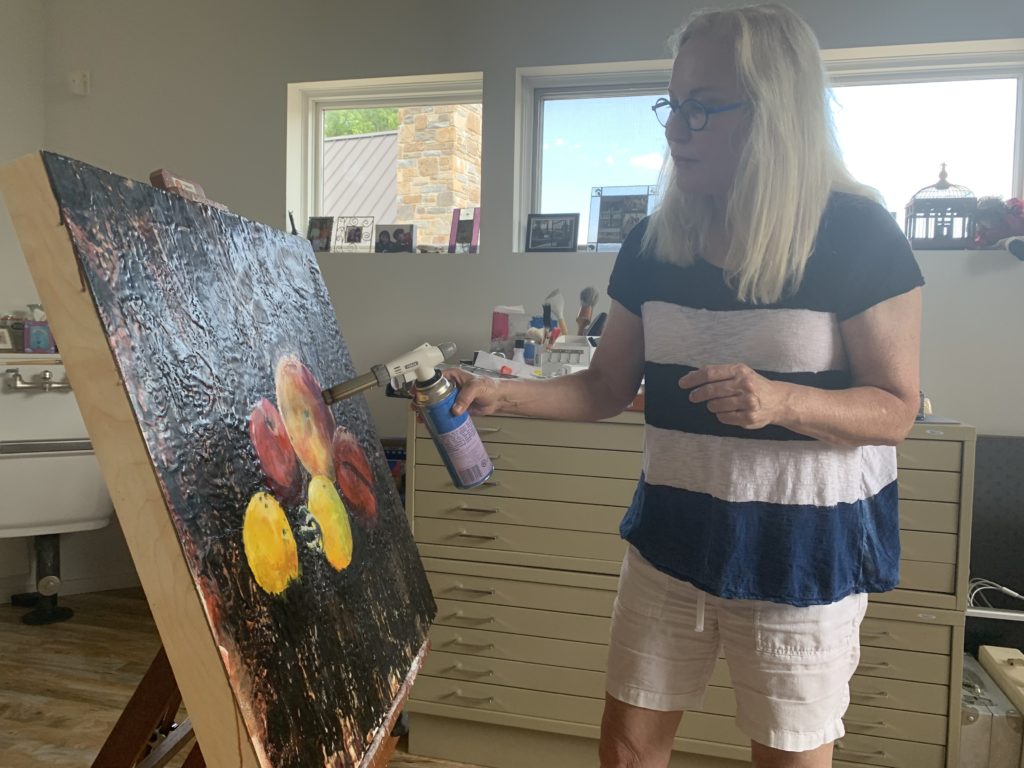Minding Her Beeswax

By Noah Hale
She may not be pulling seafood from the Bay to sustain herself, but Kara Brown depends on another Chesapeake species for her livelihood.
Brown is the founder of WaxingKara and owner of a lavender farm and three apiaries (Baltimore, Centreville, and Kent Island) where her bees are always busy. And it’s not just honey that they’re working on—Brown uses them for natural skin care products, candles, and most importantly, art.
Hers is a unique business plan that began as a way to bring art back into her life. Painting had always been her passion and hobby, and after working for years in the technology sector she wanted to be able to paint again. That’s when her friend told her about encaustic, a special paint made out of beeswax, tree resin and pigment.
To get a better idea of what this waxy art was all about and how it led to a multiplex beekeeping business, I visited Brown at her home on Chesterhaven Beach Farm in Kent Island.
Brown showed me her art studio—a well-lit, polished loft. “There’s never a time that I’m in here and working that I’m not exploring new things that I never knew before,” she said. “That keeps me young.” She was holding a blowtorch to a small square canvas that she had been working on and I slowly watched the encaustic melt and drip in different patterns. It was a black-and-white abstract, but the way she was torching and scraping at the waxy surface made it look magical. I’d never seen anything quite like it.
She told me how another beekeeper, Dale Large, had acted as her mentor when she first started raising honeybees. “I started raising bees because I didn’t know any better. I was only interested in beeswax.” But after learning more about beekeeping from Large and others, she realized how the bees could be appreciated in many other ways.
When she isn’t making art, she might be lifting 100-pound boxes in the lavender fields or inspecting her colonies’ health. No matter what, her artwork and her fieldwork have become mutually beneficial. “I feel like I’m doing something good, and like I’m going to leave the planet a little better than I found it,” she said.
She also told me how much she likes working with young people and has been considering leading workshops for people to learn encaustic painting. Brown has recently recruited a student biologist to help her assess her bee colonies, and looks forward to getting more students involved in her apiaries. “Pollinators are your friends,” she wants people to know. “You should support them however you can.”
Find her products at her store in Owings Mills or visit her website at shop.waxingkara.com.
